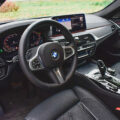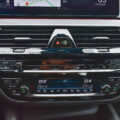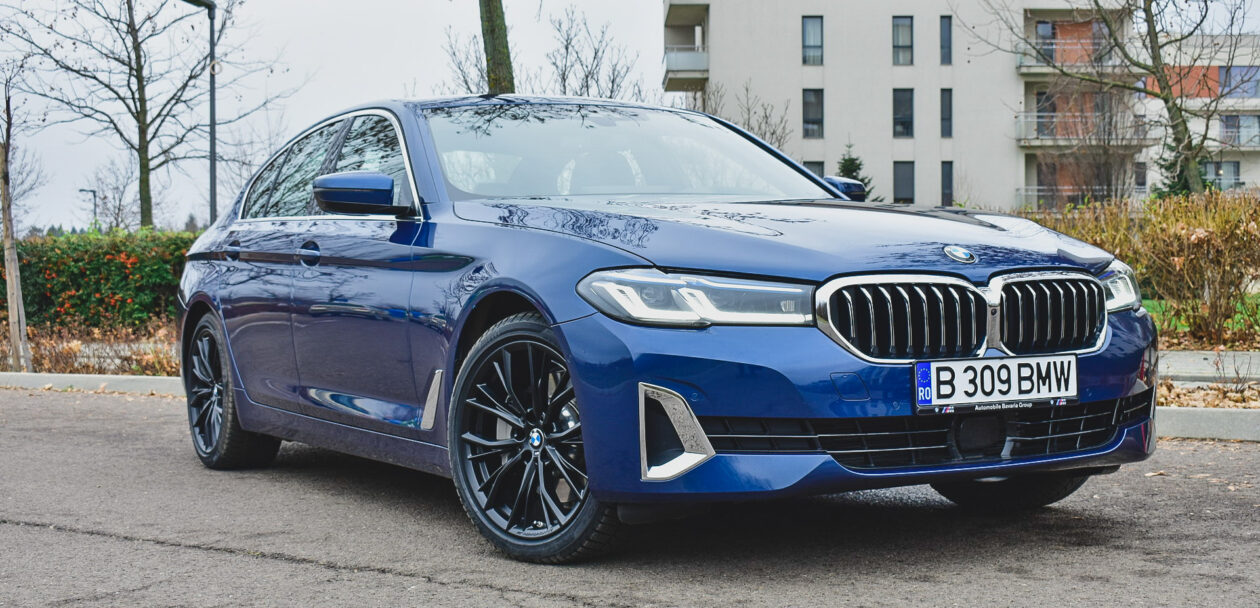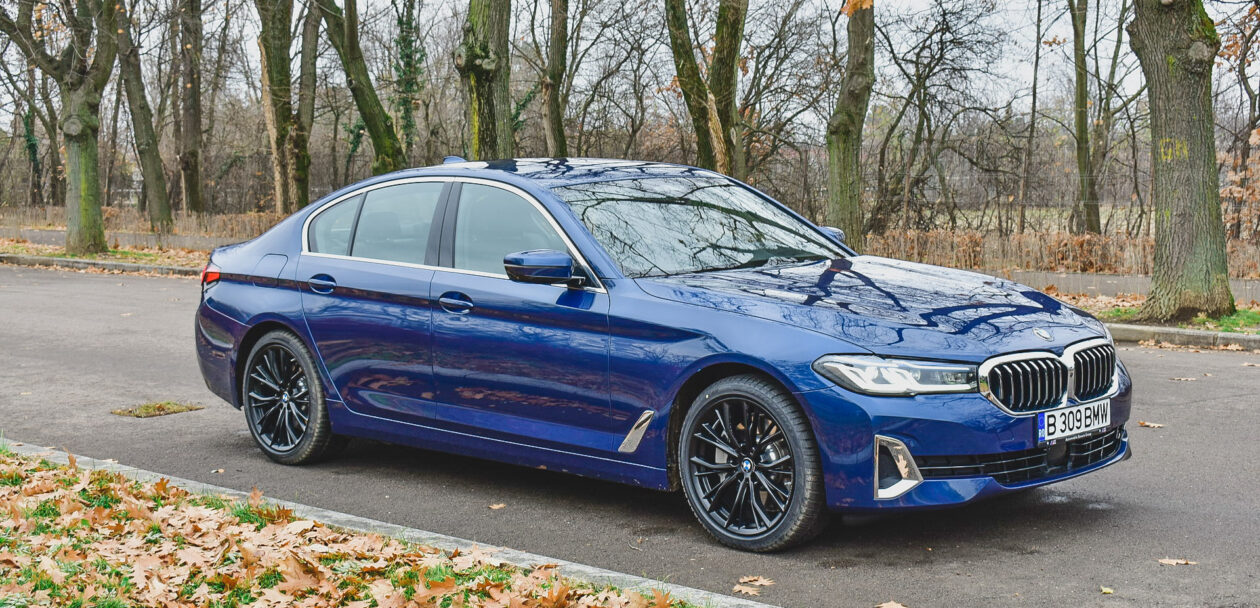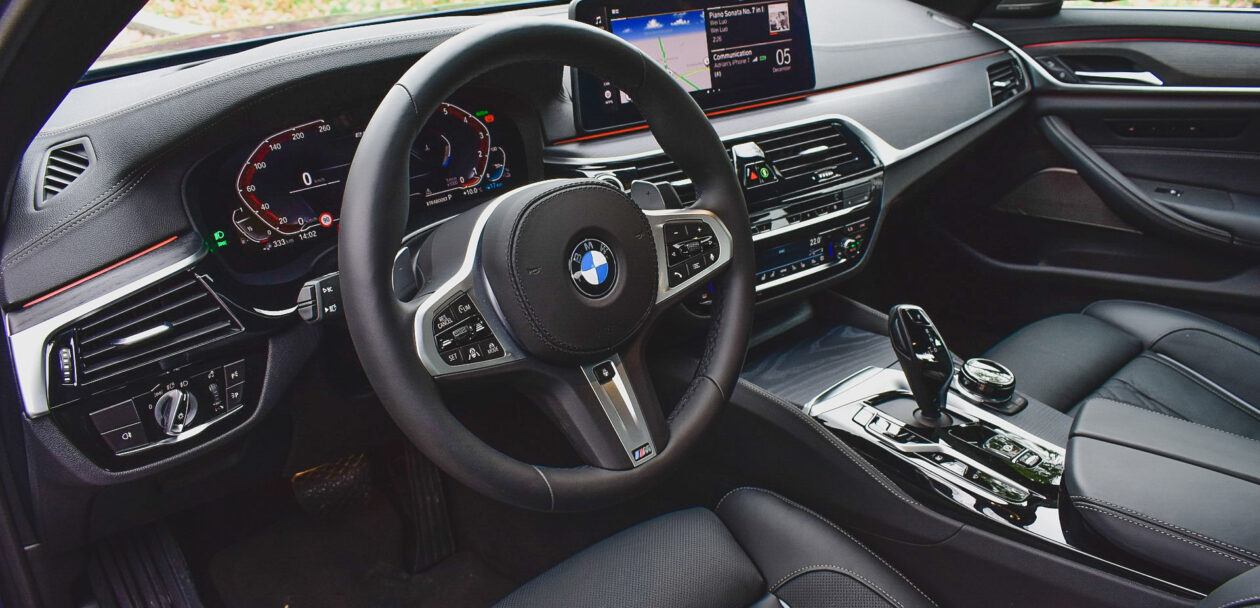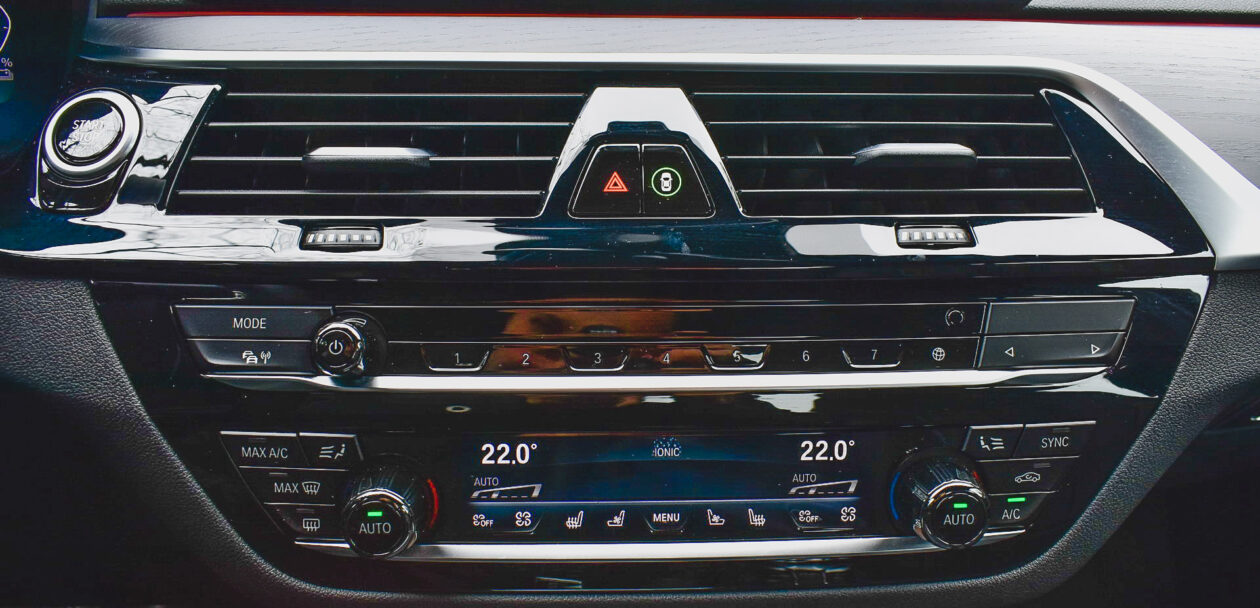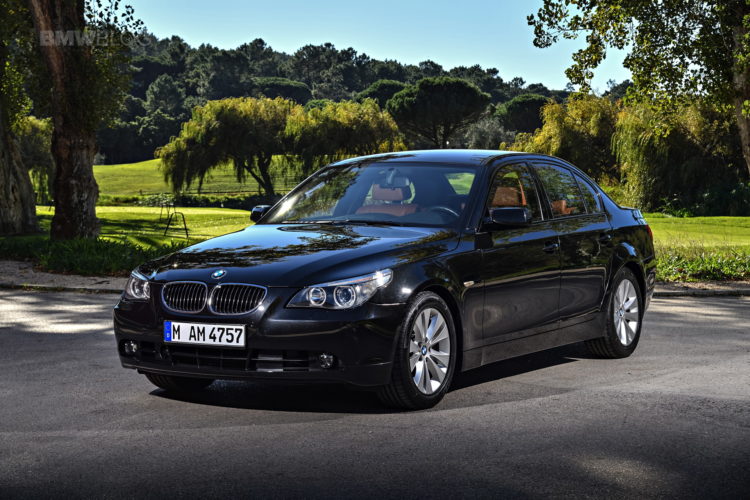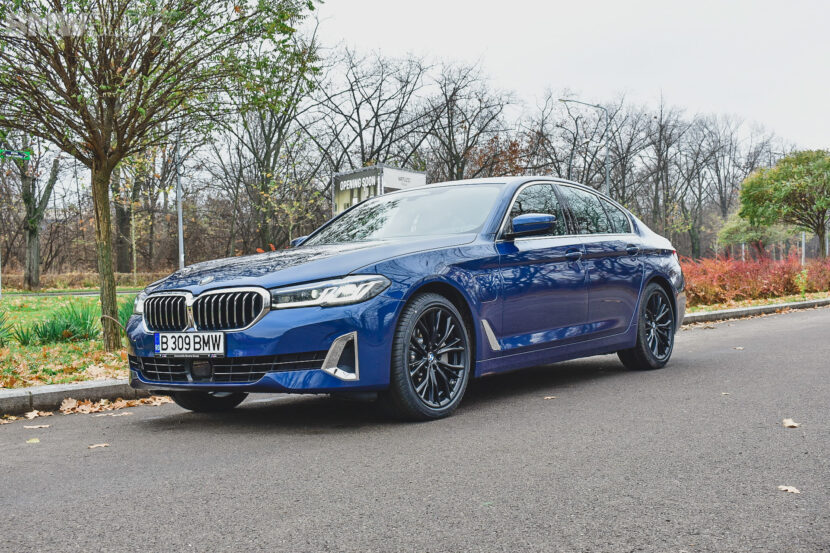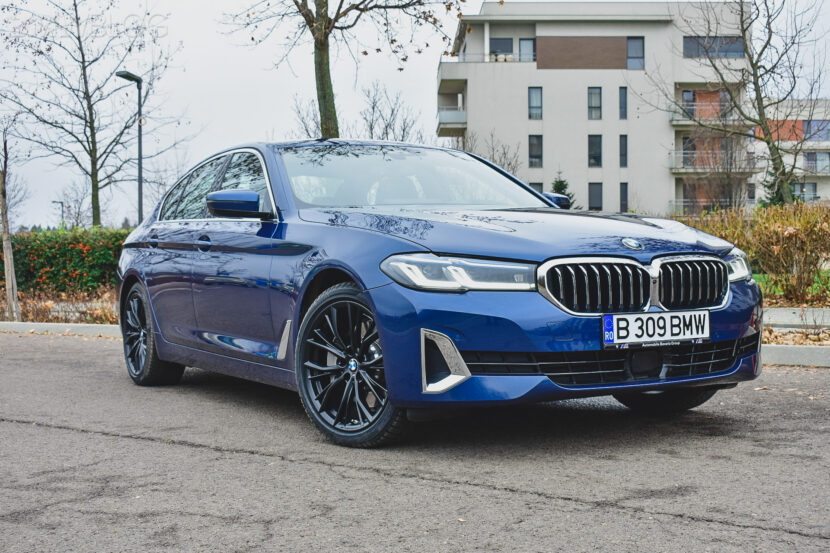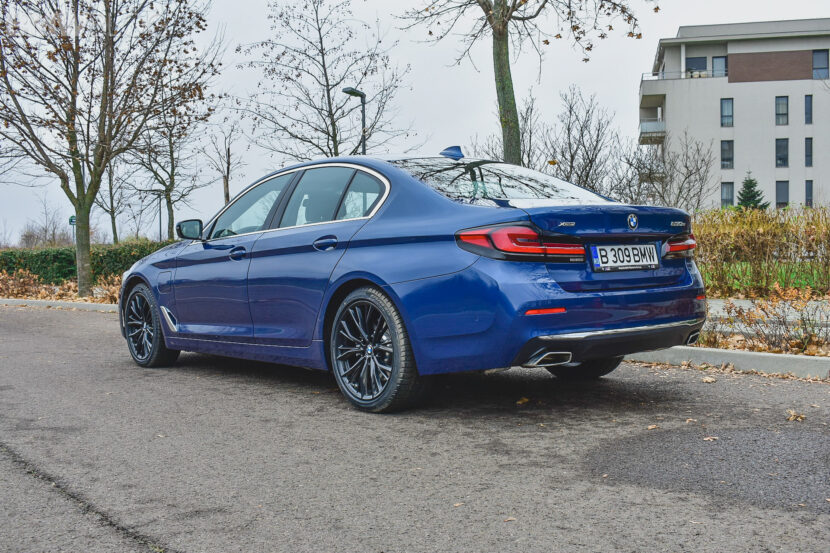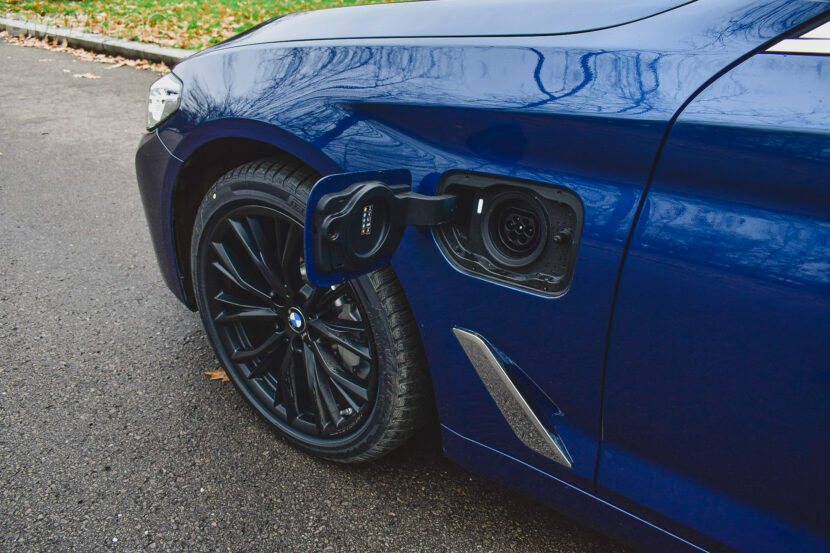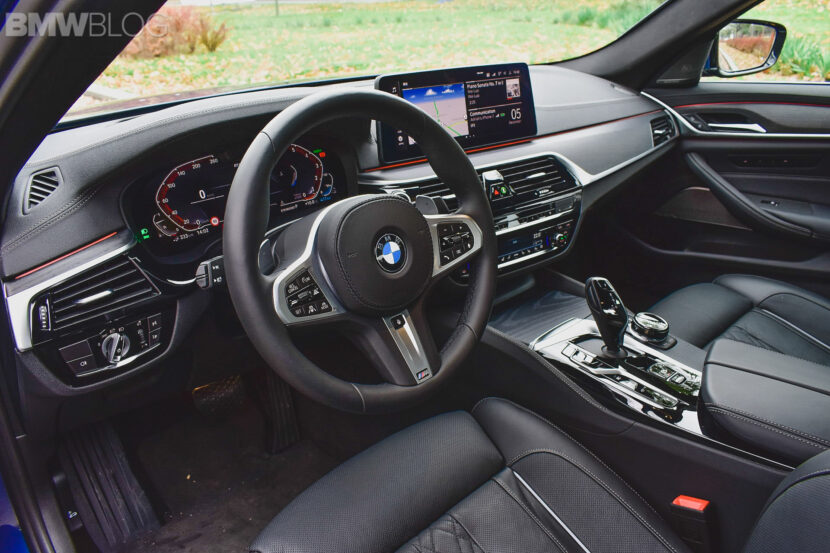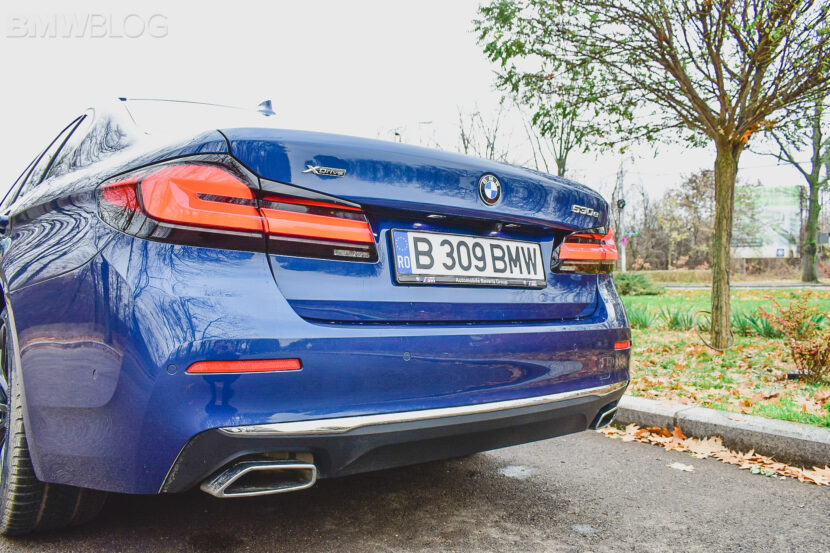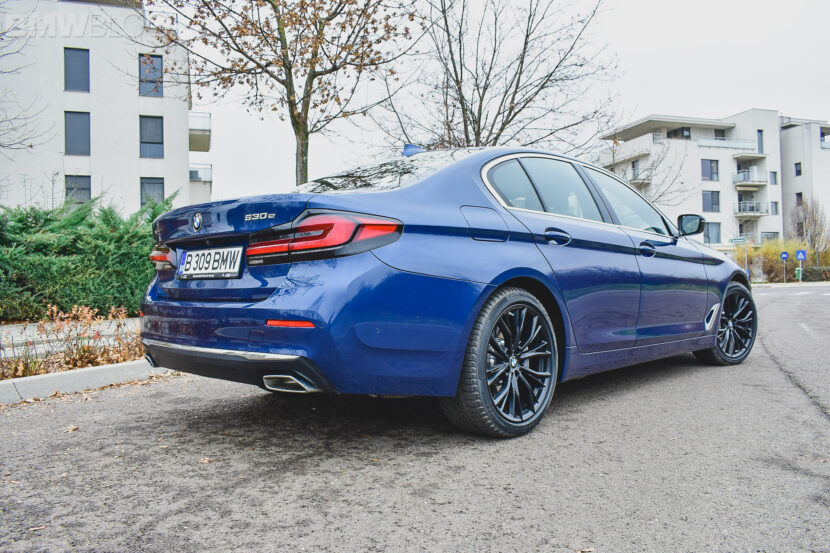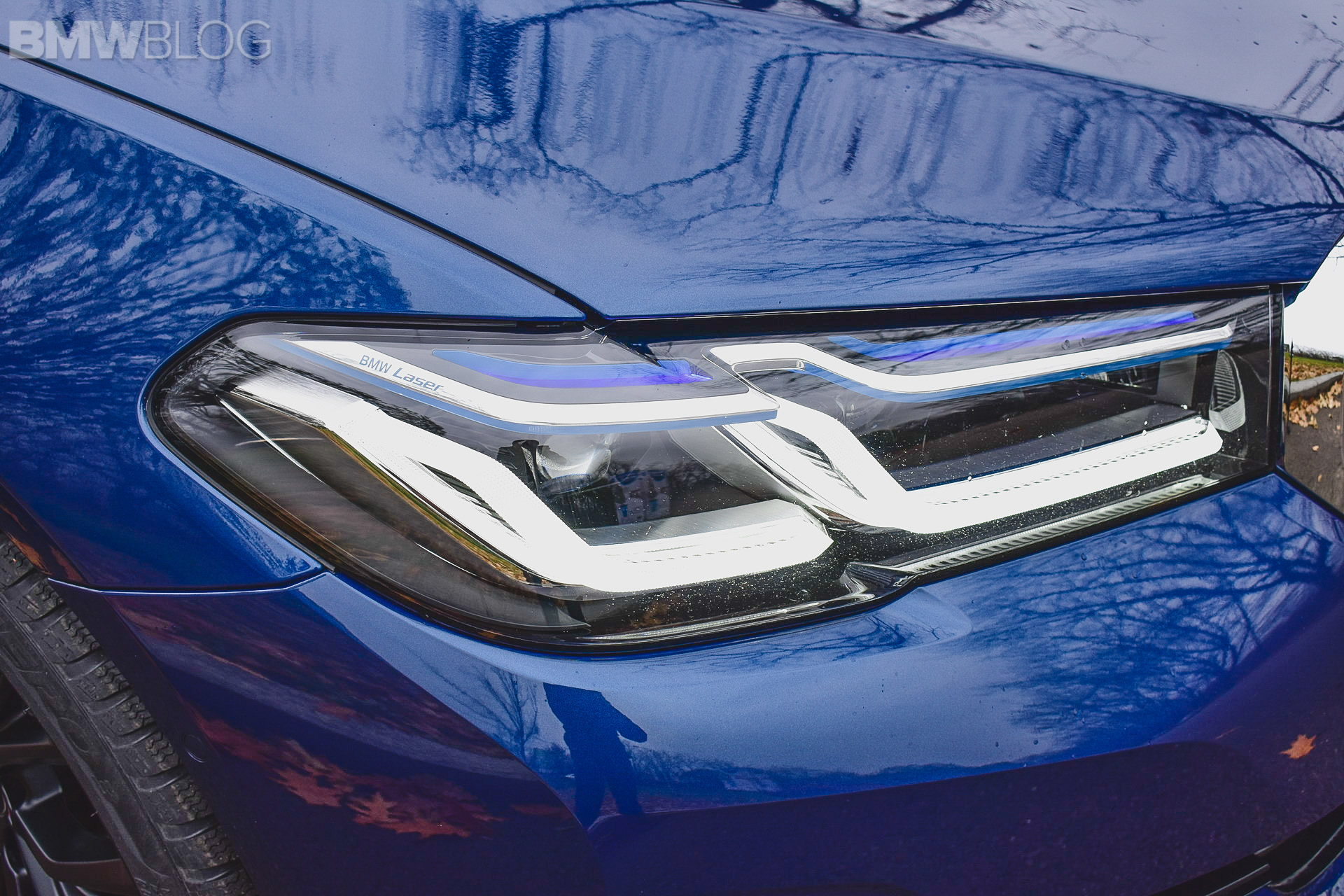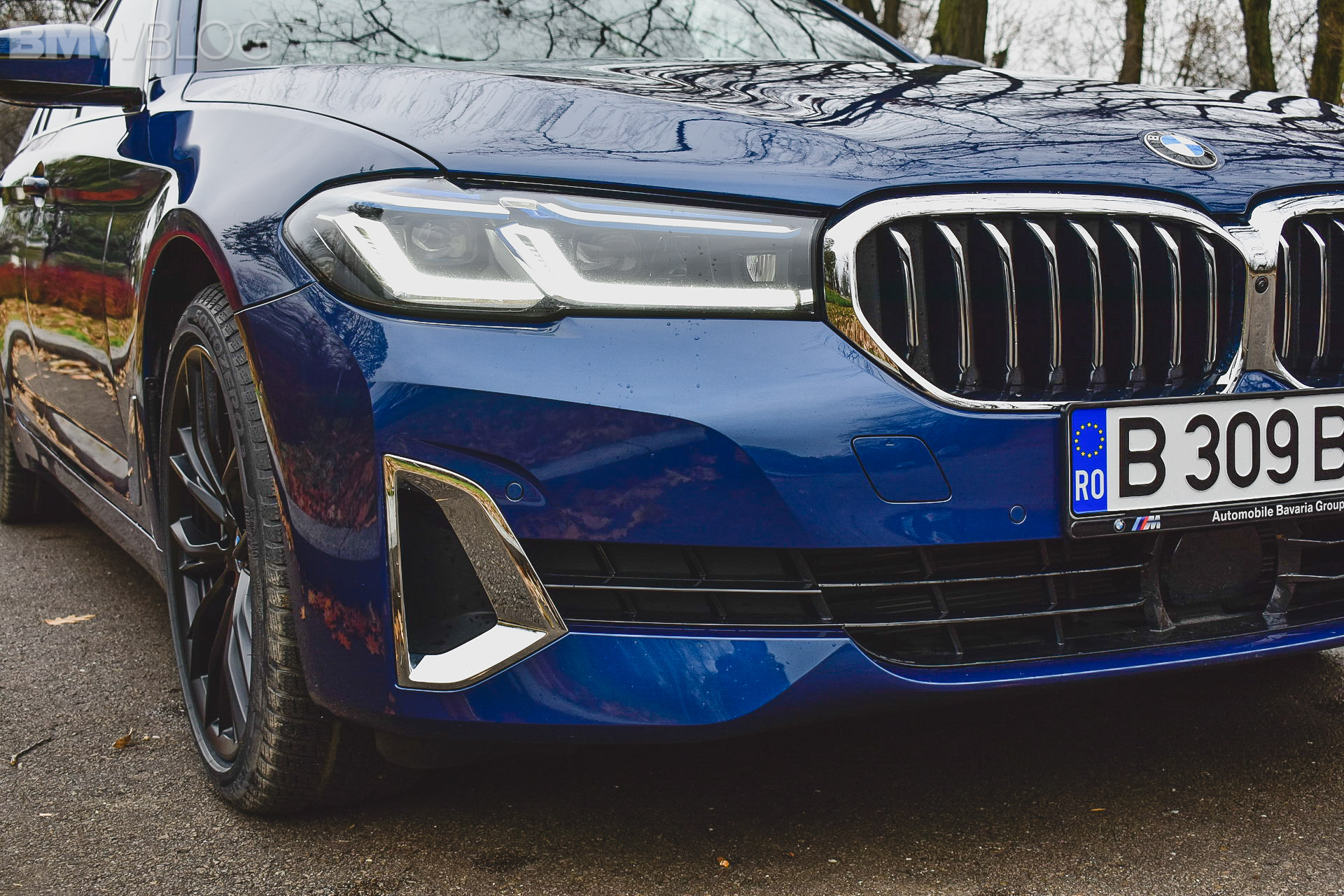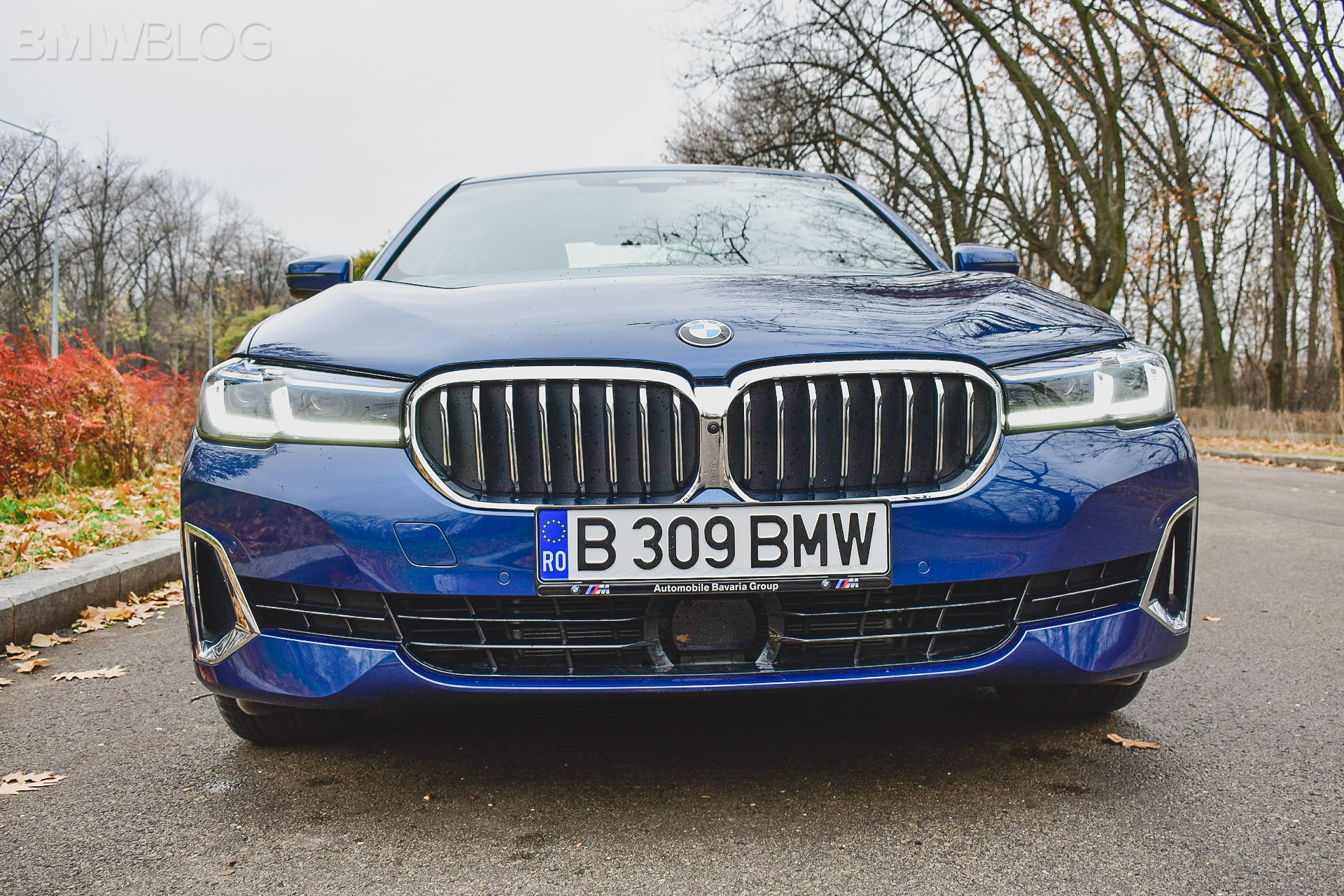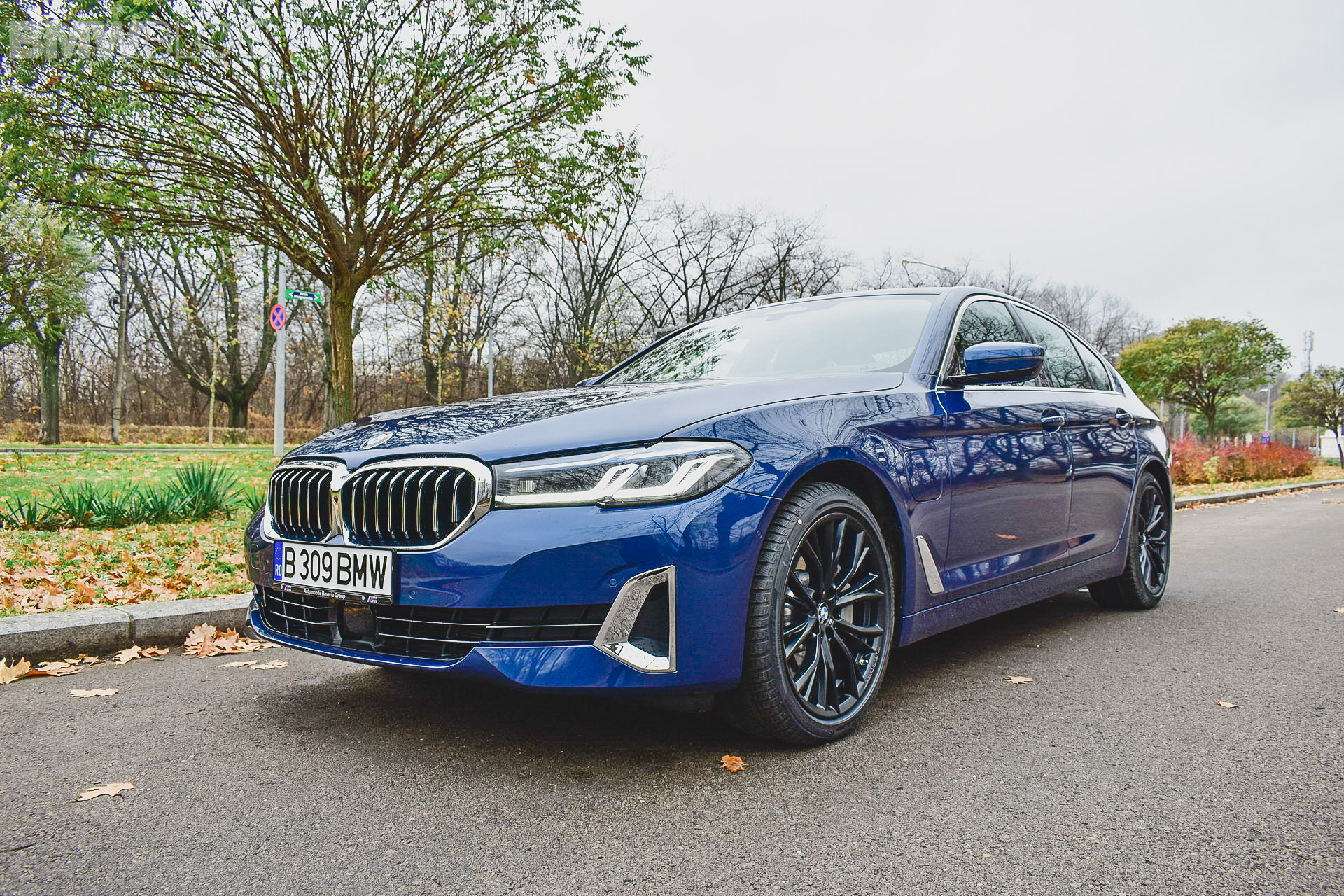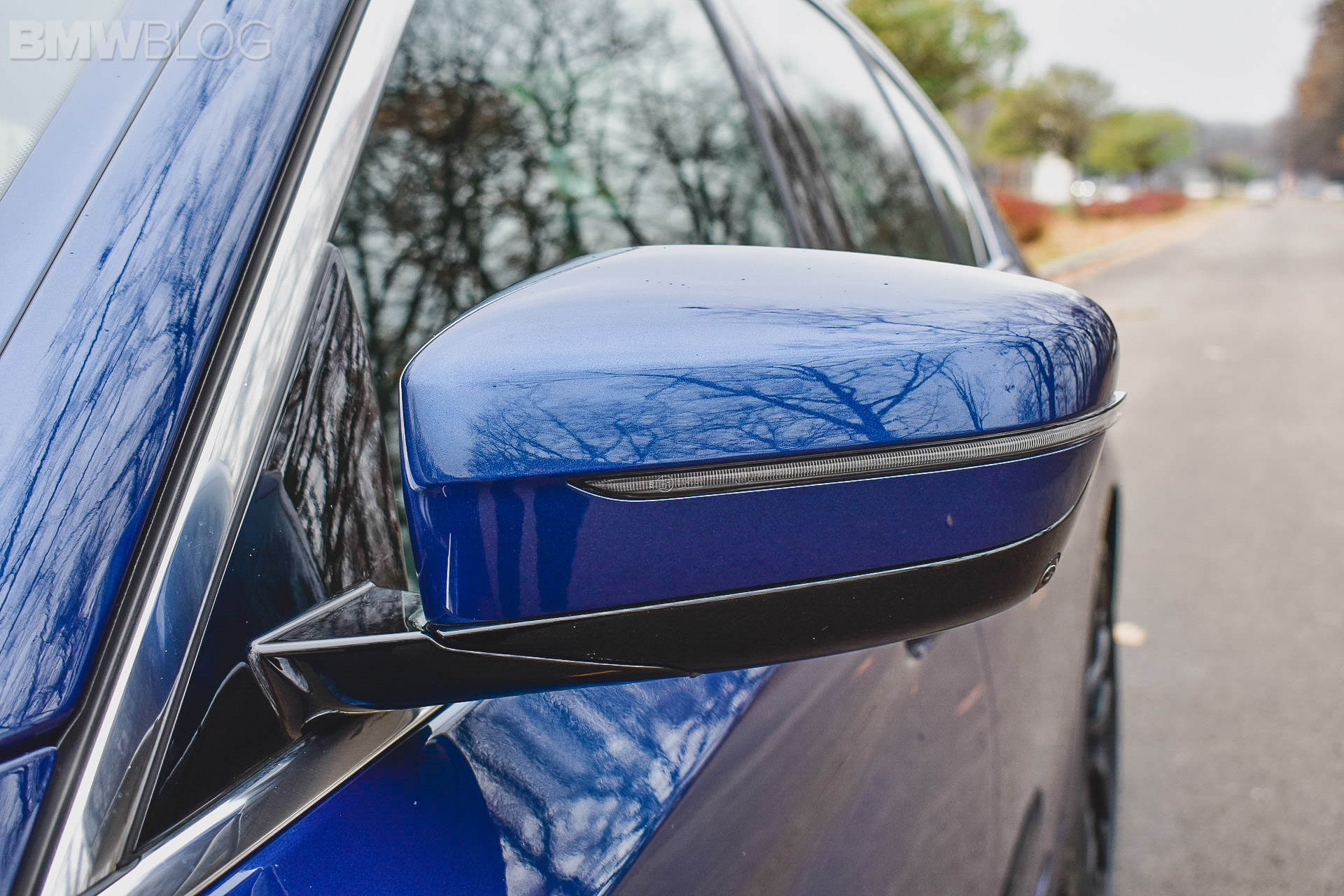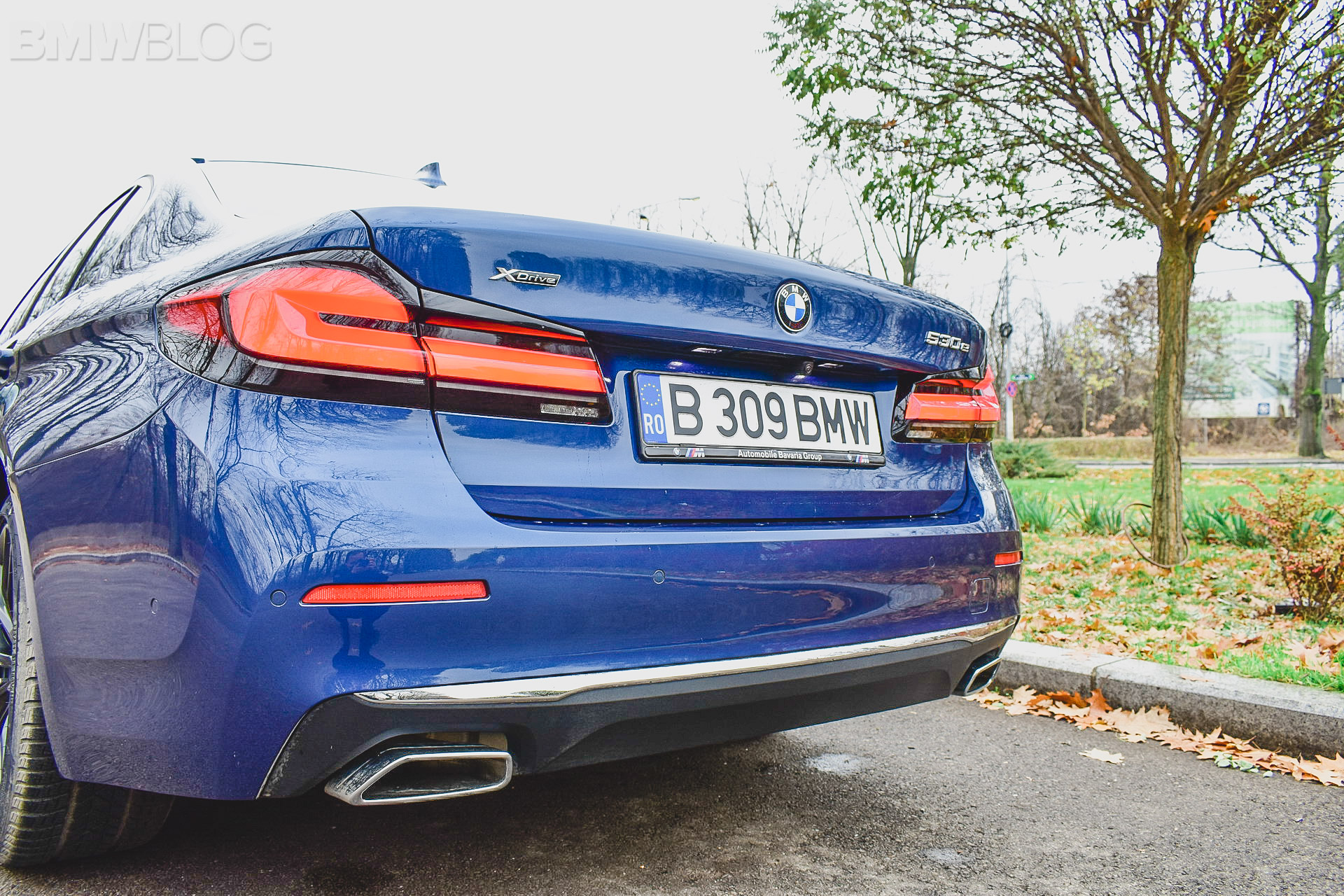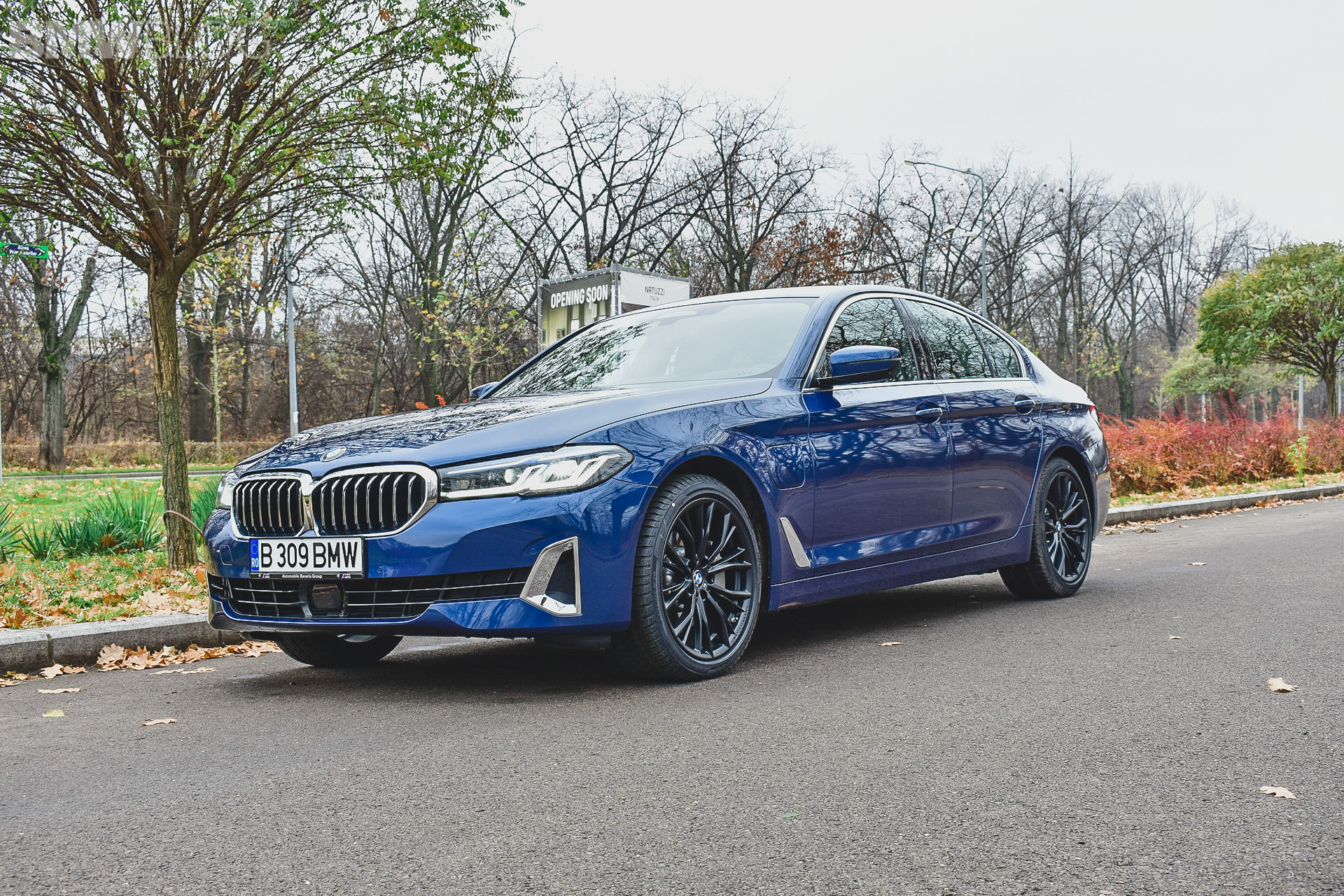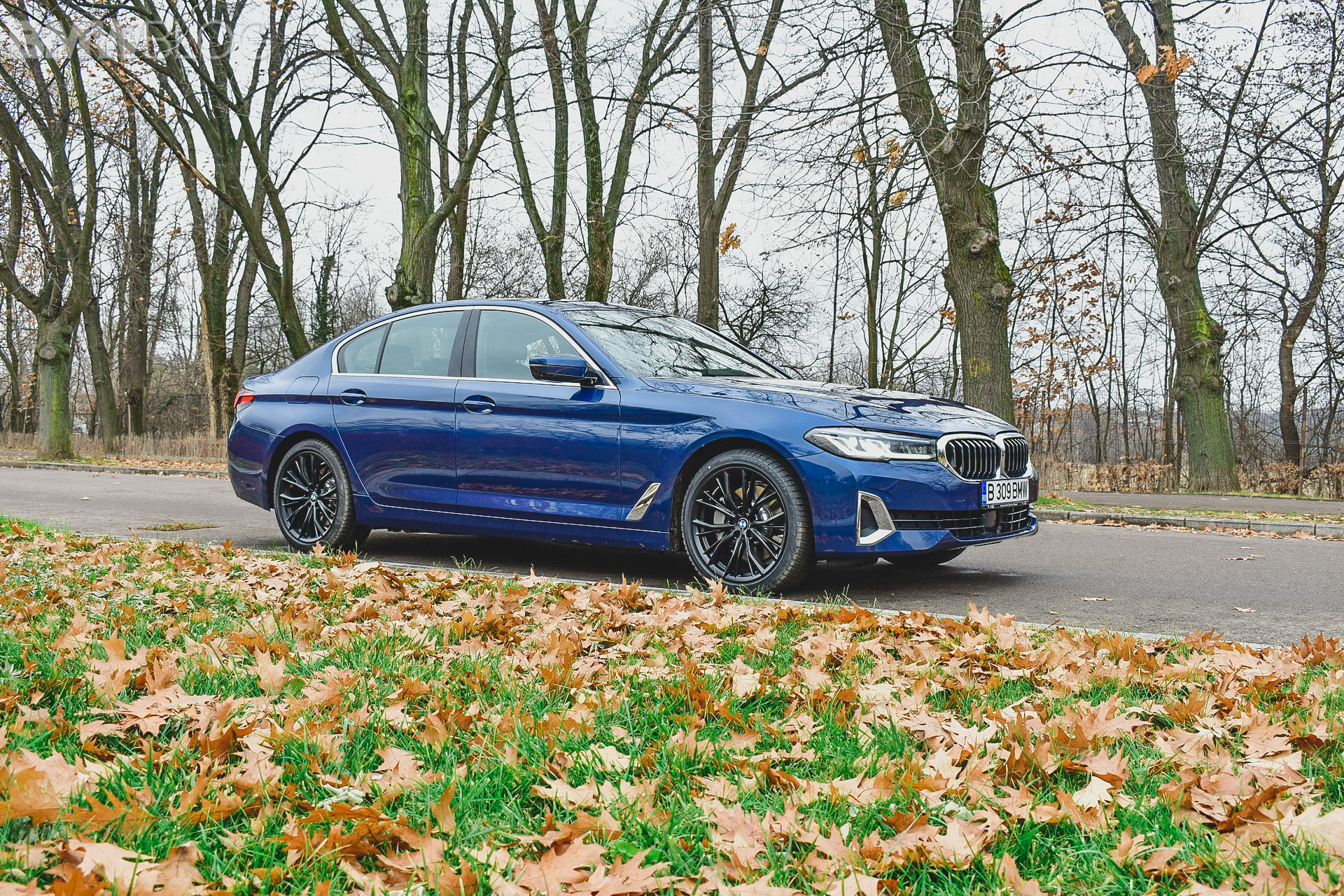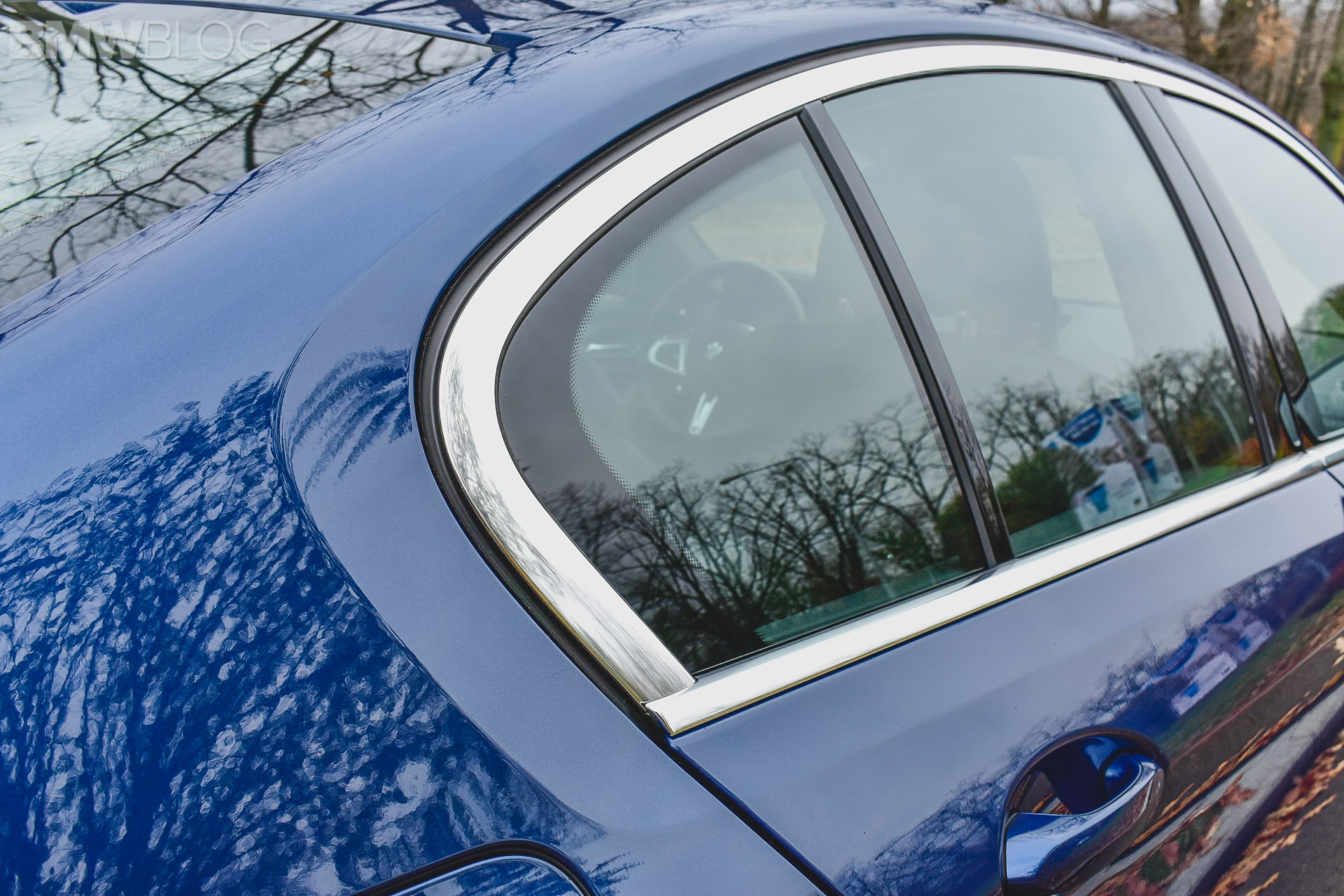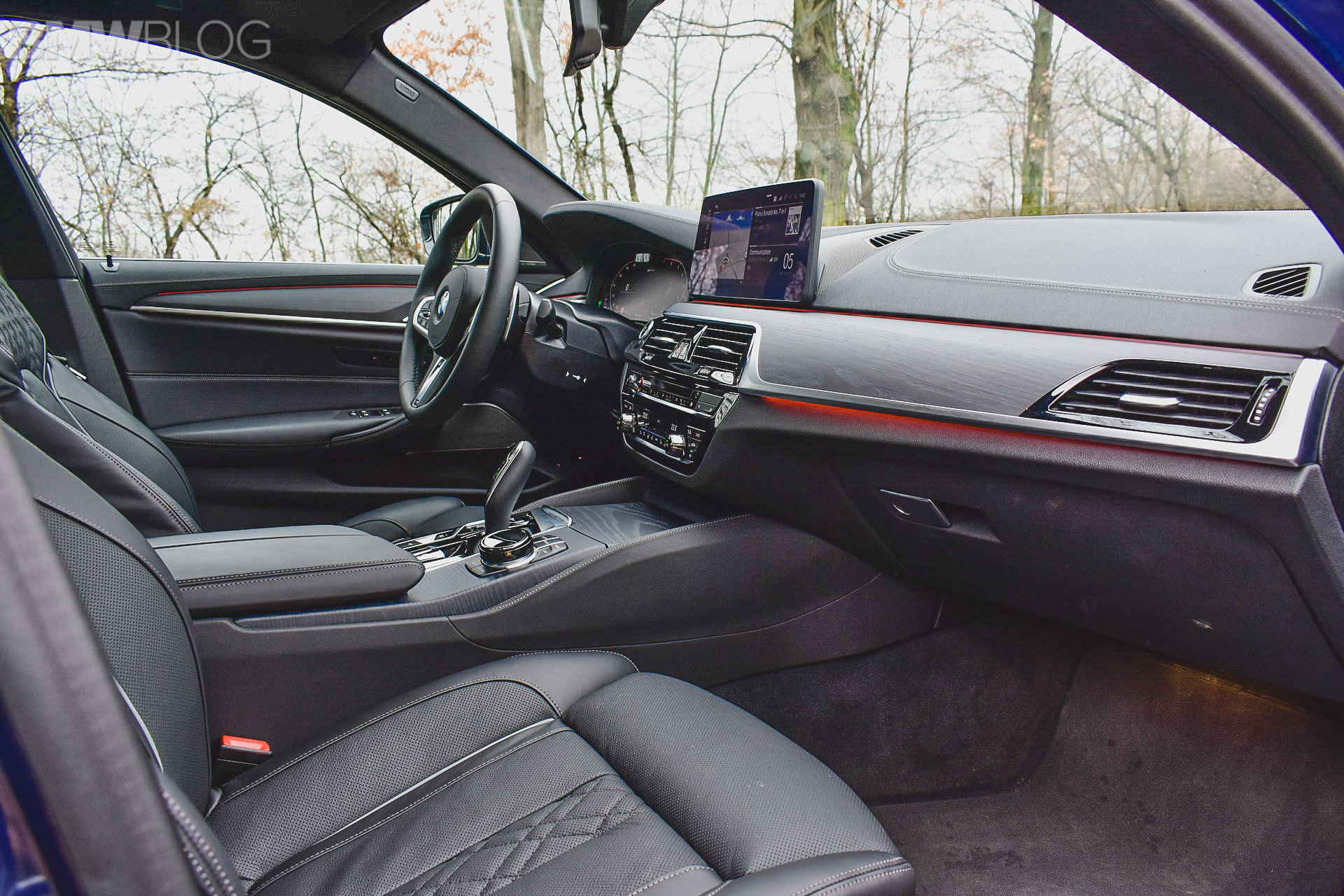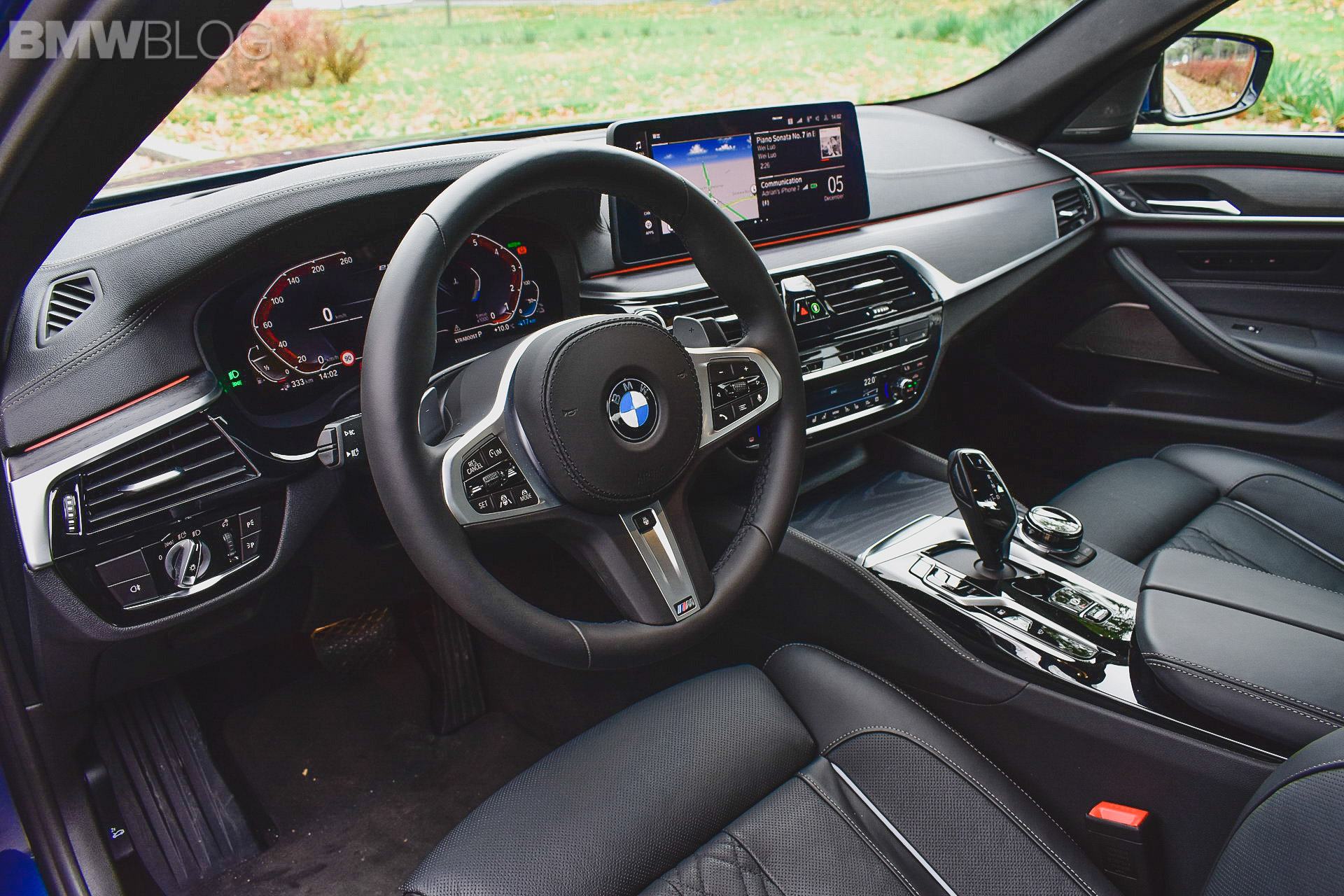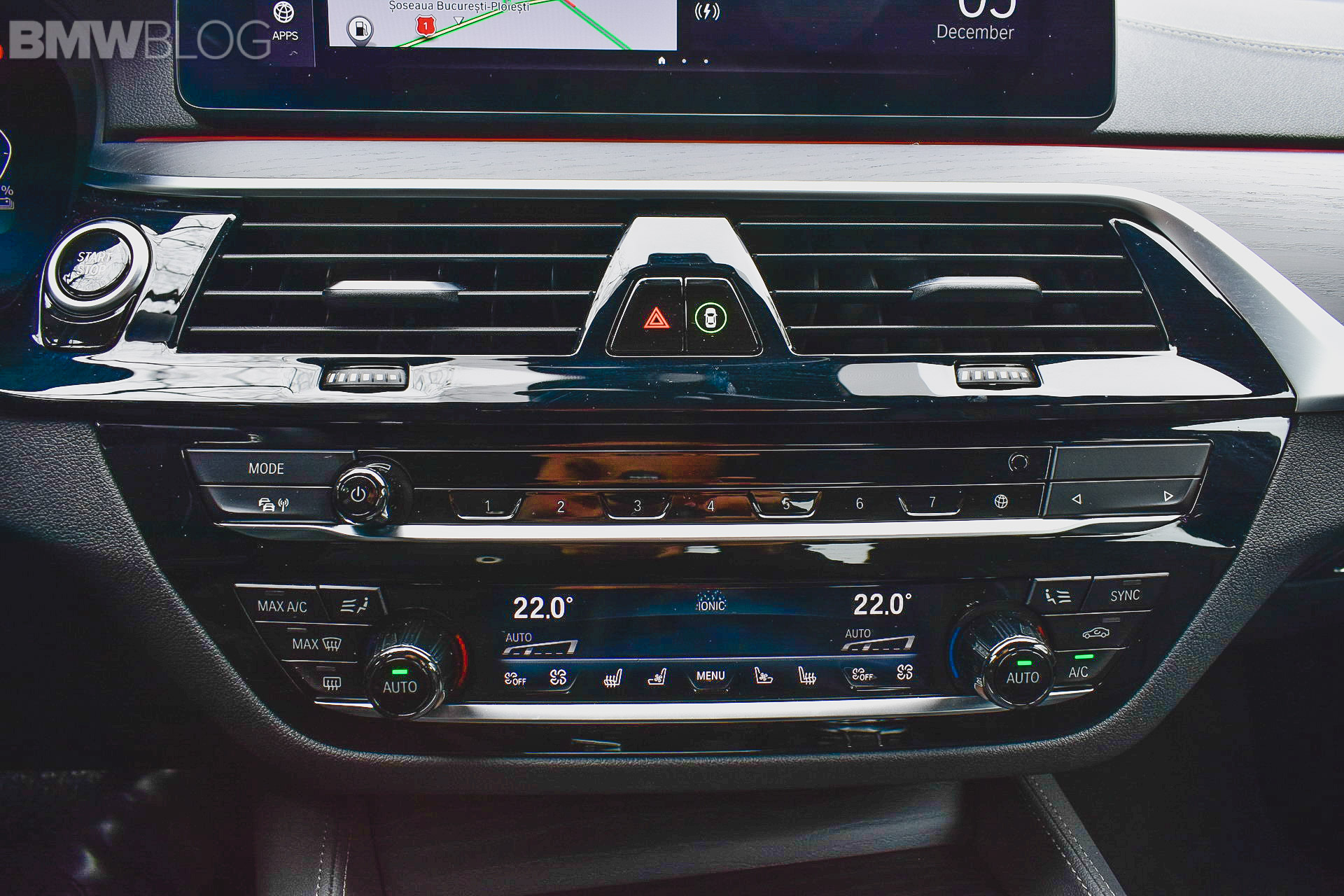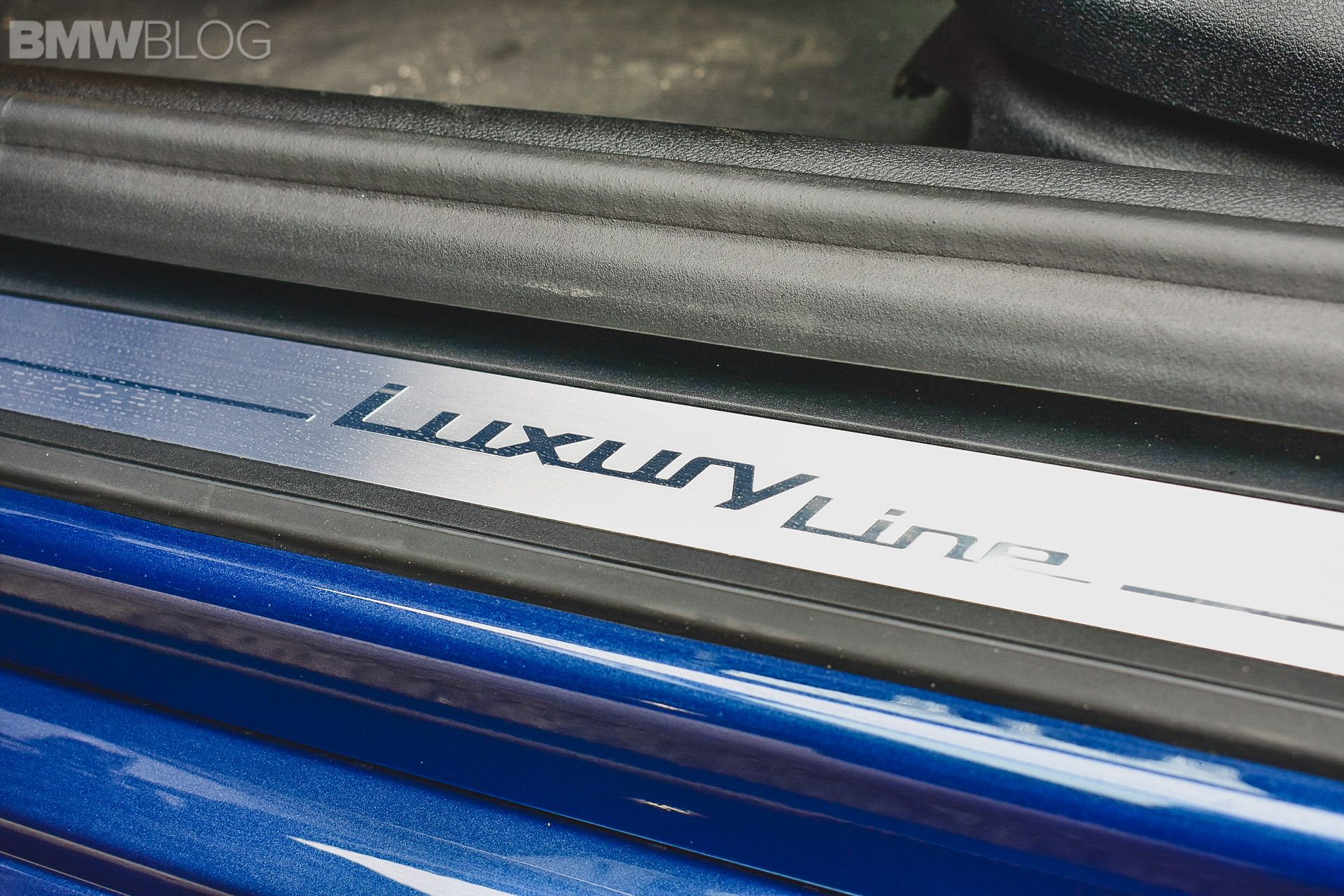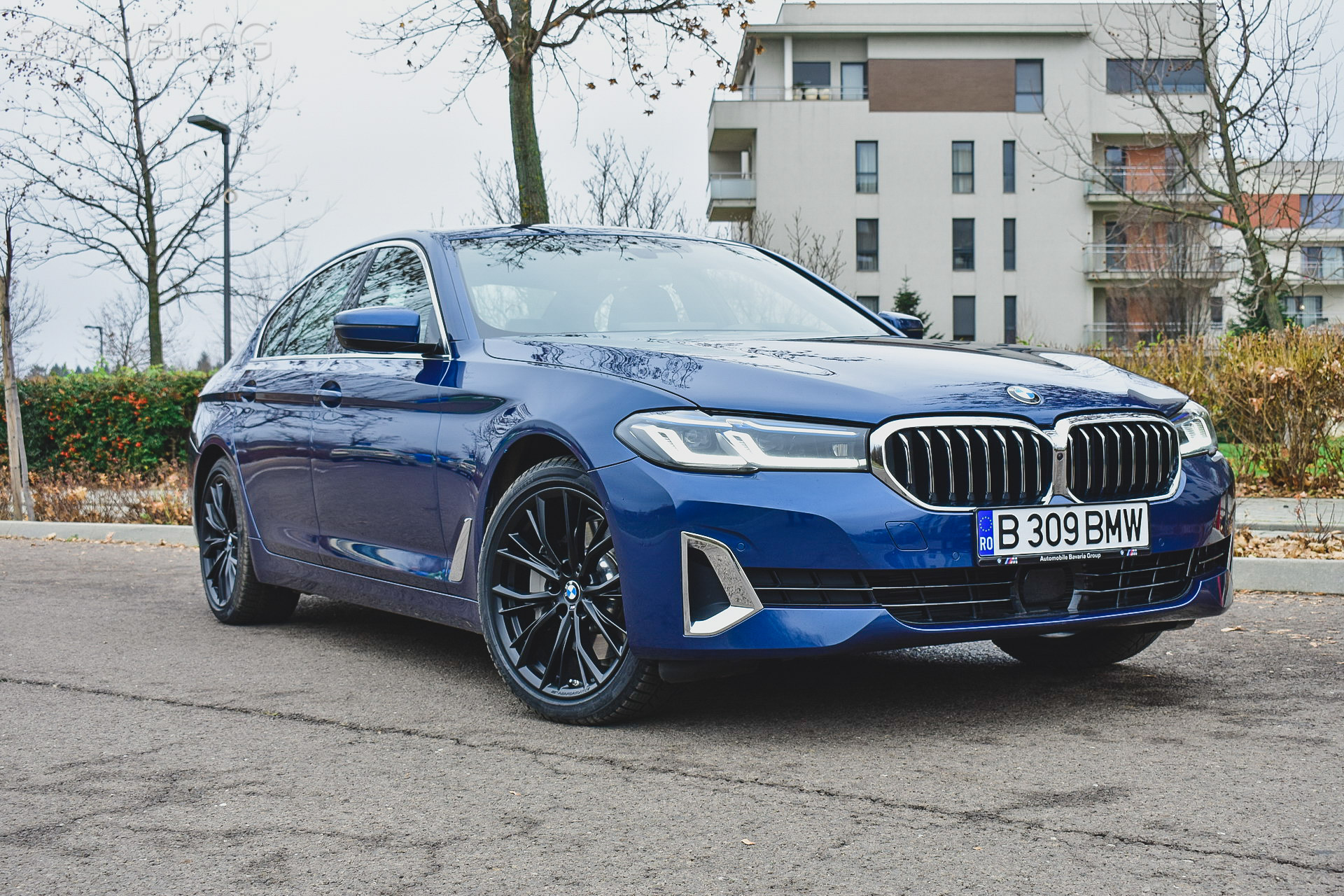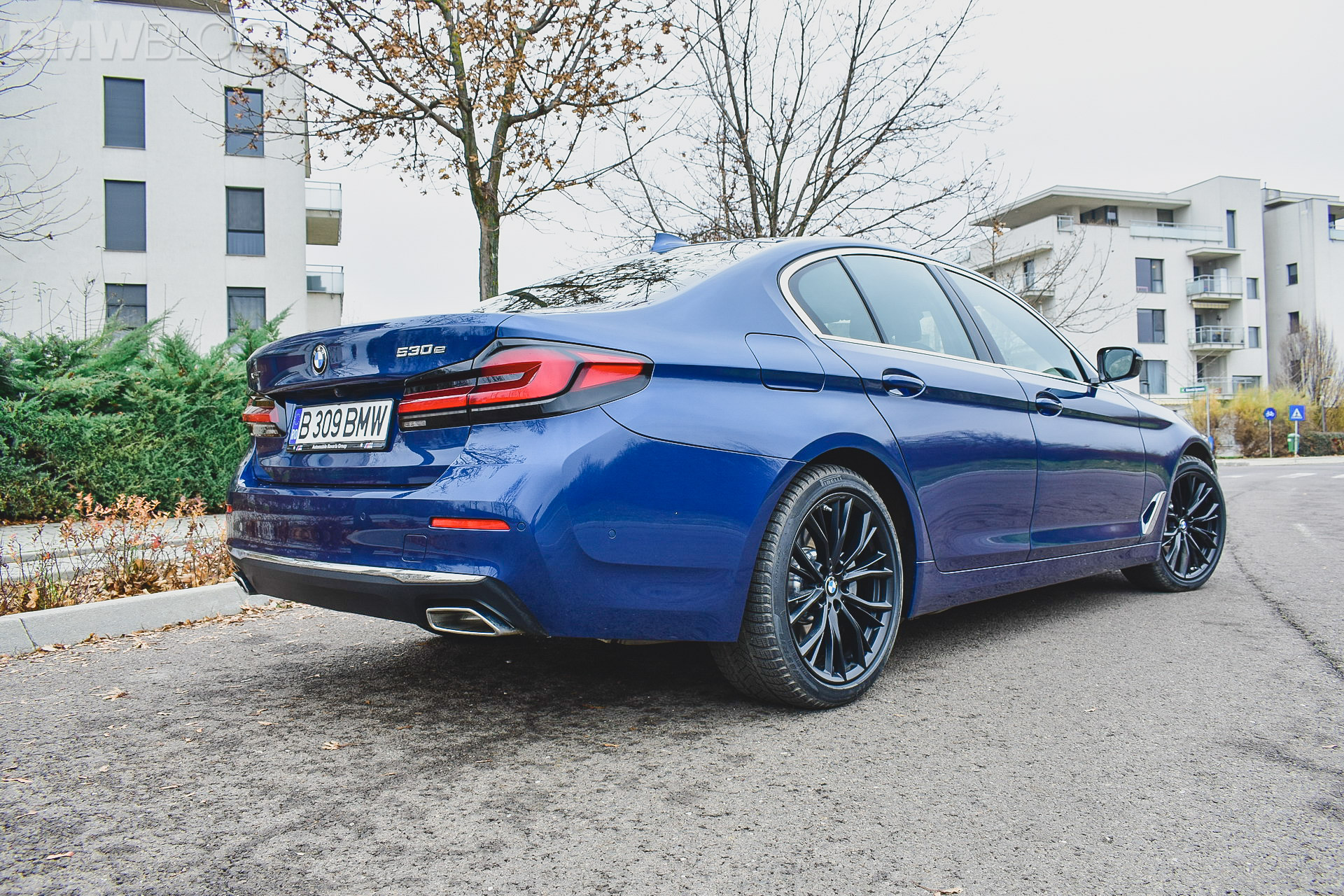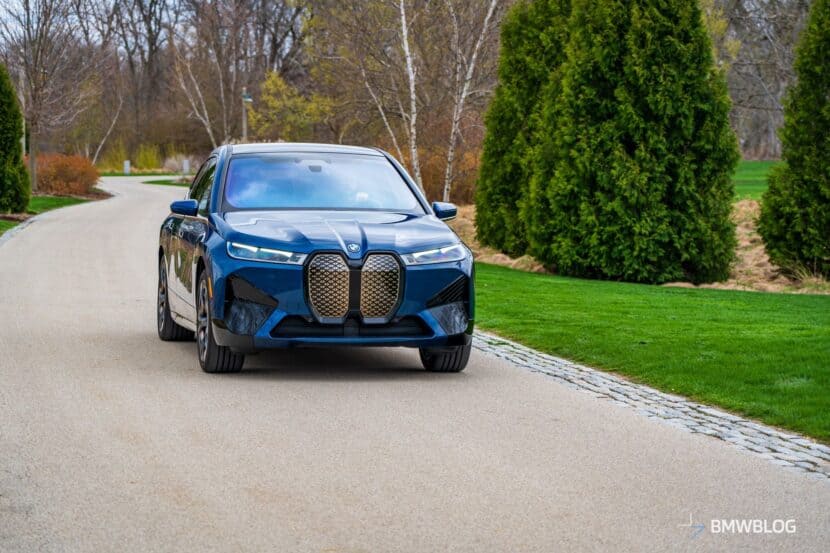The seventh generation of the benchmark business sedan underwent a facelift in 2020 and, recently, I have tested what appears to be the best non-M choice of the lineup: the 530e xDrive plug-in hybrid version.
The Iconic 5 Series
Through decades of automotive career, the 5 Series has had to reinvent itself and sharpen up its qualities. Like great wines, with the passing of time, it became even better, intensifying its flavor. The 5 Series competed with some great contenders, but every time a new generation kicked in, it only reminded us why this highly successful BMW model is truly the trendsetter of its class. As a current owner of a crisp E60 generation from 2009, I am always eager to try out the latest 5 Series models and analyze the transition and evolution between different generations. Of course, in terms of exterior design philosophy, the E60 ventured practically into the unknown, embracing a radical styling which stirred a lot of controversy at the time.
To me, the E60 is still unmatched to-date in terms of design philosophy, and it actually looks even better now than over a decade ago. Coming back to G30 and the latest LCI iteration, it might have toned down the controversial image, but it simply managed to chisel and refine itself.
To many BMW fans, the E39 is the best 5 Series ever made, which is an opinion I partly agree with. But, in many ways, the latest chapter outdoes most of its modern predecessors. Let’s see why.
Classic and modern at the same time
The G30 arrived in late 2016, while the official market debut took place in Spring next year. Many have complained that BMW played a very safe card with the new 5 Series, as it was deemed just an evolution and not a revolution over the preceding F10 model. But, as expected, the G30 bettered its predecessor in almost every discipline, with its robust design, blending in modern and classic cues, with its impressive level of technology and with its sharp dynamics, a consistent improvement over the somehow lackluster driving feel of the F10.
With respect to exterior styling, the freshly launched LCI generation came out right in time to refine the aging design of the G30 series. Of course, it also aims to keep it relevant on the market and attractive to core BMW buyers until 2023 when the future G60 generation will arrive.
Designers have done a cleaning job on the front fascia, removing many intricate details and reducing the visual complexity. Instead, they went for some very precise and sharp lines, that defines the new front end: the slimmer headlights with revised LED filaments, the 3D, upright grille and the uncluttered air vent area.
The 530e xDrive was specced in the elegant Luxury Line trim, which added a fully chromed kidney grille and new lateral air breathers on the front bumper, with a quadrilateral shape and a chrome frame. Compared to the pre-LCI generation, the new 5 Series is certainly more minimalistic, but in the good way, and feels less cluttered and complicated. The deep Phytonic Blue metallic paintwork further accentuated the elegance of the Bavarian business limousine.
The Life Cycle Impulse also breadth new life in the rear end as well. The full-LED tail lamps accentuate the 3D effect using revised graphics and an outer, surrounding frame with high-gloss black accents. The silhouette is vastly the same between the two model generations, retaining the classic window line and iconic Hofmeister kink, together with the playful character lines that soon would be remnants of a bygone era in automotive design.
The distinctive sign to tell us this is an electrified 5 Series is the separate flap on the front wing, right above the chromed side air breather, hiding the charging port for the electric unit. Other than that, the “e” letter in the nomenclature of the model also reminds us that the car has considerable environmental aspirations.
Stepping inside over the “Luxury Line” inscription on the door sills puts us in front of a characterful interior, dominated by sobriety and refinement. The all-black Nappa leather upholstery with white vertical stitches is complemented by the M Sport steering wheel and the open-pore anthracite wood trims of the dashboard and door covers.
Originally, the test model was equipped with the 20” BMW Individual Aerodynamic Wheels, but given the outside temperatures, at the moment of the review, the 530e xDrive wore Pirelli winter tires with 19-inch diameter and M Performance 786M matte-black alloys.
BMW did not touch the general functional architecture of the dashboard, with the physical controls and generous HVAC display and panel surviving the refreshment procedure. The typical gear shifter also found on the G11 and G01/G02 models is also here to stay. Furthermore, to further highlight the sheer build quality, the iDrive knob and the buttons on the center console featured the optional ceramic glazing.
The most impressive feature of the new dashboard remains the impeccable integration, performance and execution of the OS 7.0 digital interface, with the huge instrument cluster and central control display. The operation is intuitive and the graphics are almost perfectly executed.
In terms of travel comfort, there is an abundance of space inside the new 530e xDrive, both at front and at the rear. The fully electrically-operated front seats with memory, heating and ventilation are really an excellent choice to have, even though they cost around EUR 1,400.
The first conclusion you can draw after witnessing and feeling the new 5 Series LCI is that it managed to retain its majestic aura unadulterated. The whole exterior design is crisp and imposing, sticking to tradition and also embracing modernity. On the inside, you are always embraced by the same pleasant, well-known BMW atmosphere, with an extra dose of digital stuff and luxury. Of the German premium trio, the Bimmer still manages to be the handsome guy in the class, as always.
Joy at all times, with some unexpected downsides
Comfort and driving dynamics feels entirely at home in the new 530e xDrive. The PHEV can be fun if needed, razor-sharp if pushed to the limit, but actually it feels serene and comfortable when driven calmly, enjoying every meter of the trip. The 530e xDrive pairs a 184 PS, 2.0-liter petrol engine known from the 520i with a 109 PS electric unit, bringing the output of the powertrain to 292 PS (288 hp), which is available for 10 seconds under the XtraBoost mode.
Under normal circumstances, the output of the engine is capped at 252 PS (248 hp), enough to ensure a 5.6 seconds acceleration from 0 to 100 km/h and a top speed of 230 km/h. The power is sent to all four wheels thanks to the xDrive system and the 8-speed Steptronic gearbox.
Even though it weighs 60 kg more than the rear-driven 530e and 215 kg more than a 530i xDrive, the all-wheel drive plug-in model feels agile and never like a giant elephant in china store. Of course, there are some downsides due to the electric architecture, which reduces the boot size to 410 liters from 530 liters and the fuel tank capacity, that drops from 68 liters to just 46 liters.
Given the additional weight, it is clear that a compromise for cutting down on emissions has been made. The car drives brilliantly, like every BMW 5 Series should, but there is a toll to pay for saving Mother Earth: the overall fuel consumption.
BMW announces a value of 2.0 – 2.1 l/100 km (112 – 118 US mpg), which is highly theoretical sometimes. Why? Because the electric unit ensures a real autonomy of around 35 km at most, which depletes very fast in congested traffic and at low exterior temperatures. Starting with 50% load, after 15 minutes into my first ride with the 530e xDrive, the “juice” in the battery has already drained out, which meant the ICE was turned on. In sequence, given the extra weight and no help from the electric side, the fuel consumption quickly went up to around 9.5 – 10 l/100 km (24.8 MGP – 25.3 MPG), which is way over the communicated values.
You would really have to drive without stressing the powertrain too much as to merely achieve the miracle values reported by Munich. First of all, recharging a PHEV takes a long time – even at a 3.7 kW (over 5-6 hours if there’s nothing left in the battery). At a common home socket, the waiting time exceeds 10 hours in most cases.
And embracing PHEV culture comes at a cost, besides the higher acquisition price: a strict recharging routine that one must adhere to. Of course, there are some ways to evade the process, but sooner or later, you will be forced to come back to the imposed habits.
A temporary solution would be to set the BATTERY CONTROL mode to save a designated percentage of battery energy while driving. You can even go as far as completely recharging the battery using the respective driving mode. I did it myself as an exercise and managed to skyrocket the fuel consumption to around 14 l/100 km (16.8 MPG), which is just too much even for a 2.0-liter engine like the one in the 530e xDrive. I can guarantee that the 530i xDrive consumes a lot less.
Besides this, the BATTERY CONTROL will bash all the attempts to save the impression of protecting the environment. In addition to the increase in fuel consumption, it will most likely lead to a dramatic rise in CO2 emissions, and that is quite bad news.
Don’t get me wrong – PHEVs are a great attempt at bridging the gap between ICE and purely electric powertrains. But, after some of my experiences, such propositions leave much to be desired, at least for the time being. The 530e xDrive, like the 330e, is an overall good car. But I retain my opinion that the plug-in hybrid architecture better suits higher-riding vehicles, like the X3 xDrive30e and the X5 xDrive45e.
Would I buy one?
As much as I love the 5 Series as a true BMW epitome, the answer is no in the case of the 530e xDrive. I would choose the 530i xDrive or the 520d xDrive over the mid-range PHEV variant, strictly for aspects related to fuel consumption and kerb weight.
In addition, they cost a lot less: EUR 3,000 to EUR 5,000 from the base price. With those being said, the 530e xDrive leaves much to be desired on the effectiveness and real gain brought in by the electrified drivetrain. Because it is otherwise a great car, just not entirely perfect. Most likely, the 545e xDrive has superior virtues with respect to the improved electrified powertrain, higher electric range and better fuel consumption. Regarding the question, that’s the one I would buy.
2021 BMW 530e xDrive
Exterior Appeal - 8.5
Interior Quality - 9
Steering Feedback - 9
Performance - 8
Handling - 8.5
BMWness/Ultimate Driving Machine - 8
Price Point - 6
8.1
The 5 Series is the BMW that always stood the test of time and market. An all-rounding vehicle, chiseled, having multiple strong points. The strong dynamic capabilities are a bit overshadowed by the downsides of the plug-in hybrid powertrain installed on the 530e xDrive. If you want something green, go for the 545e xDrive, but just don’t look at the price.






